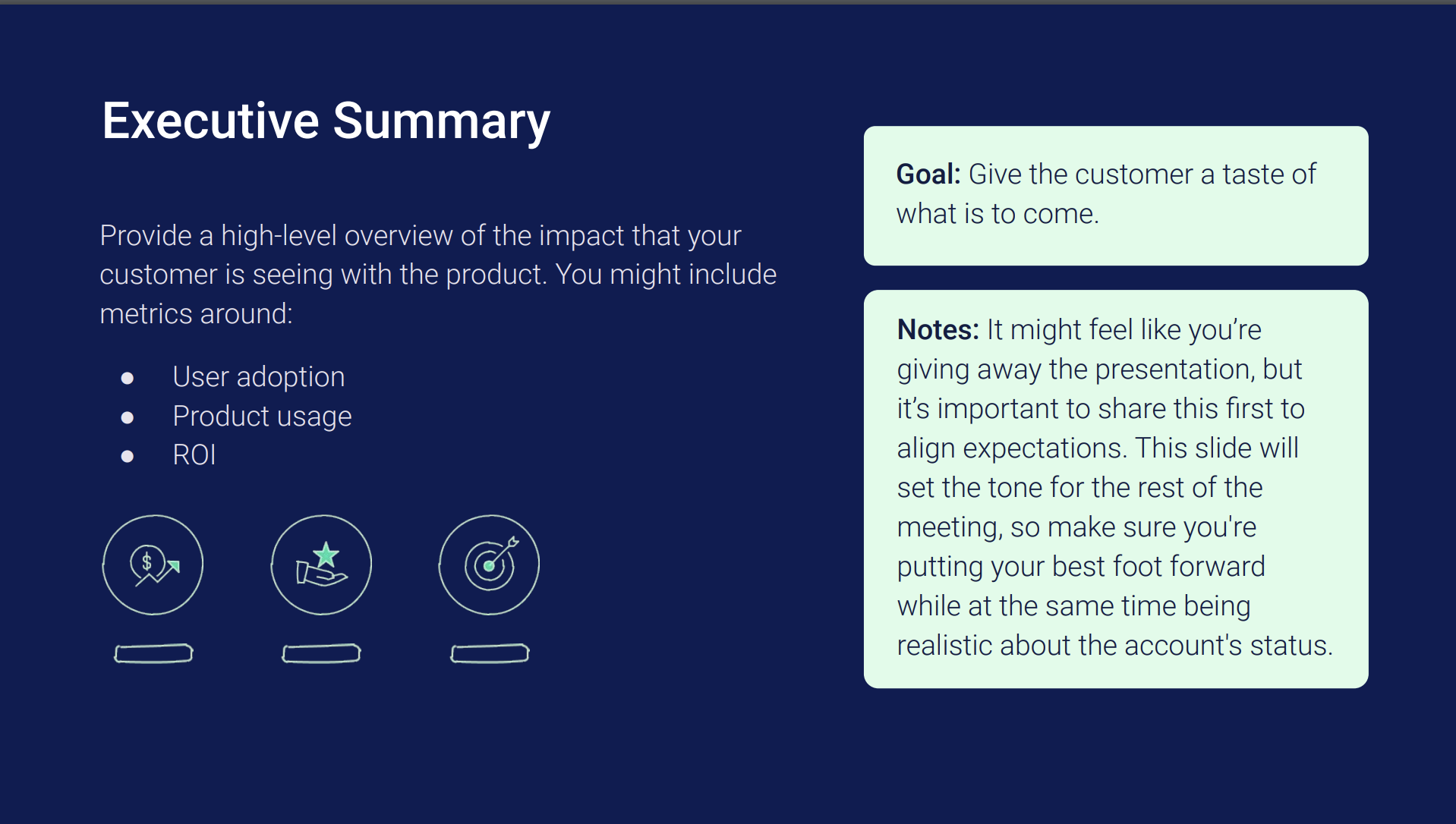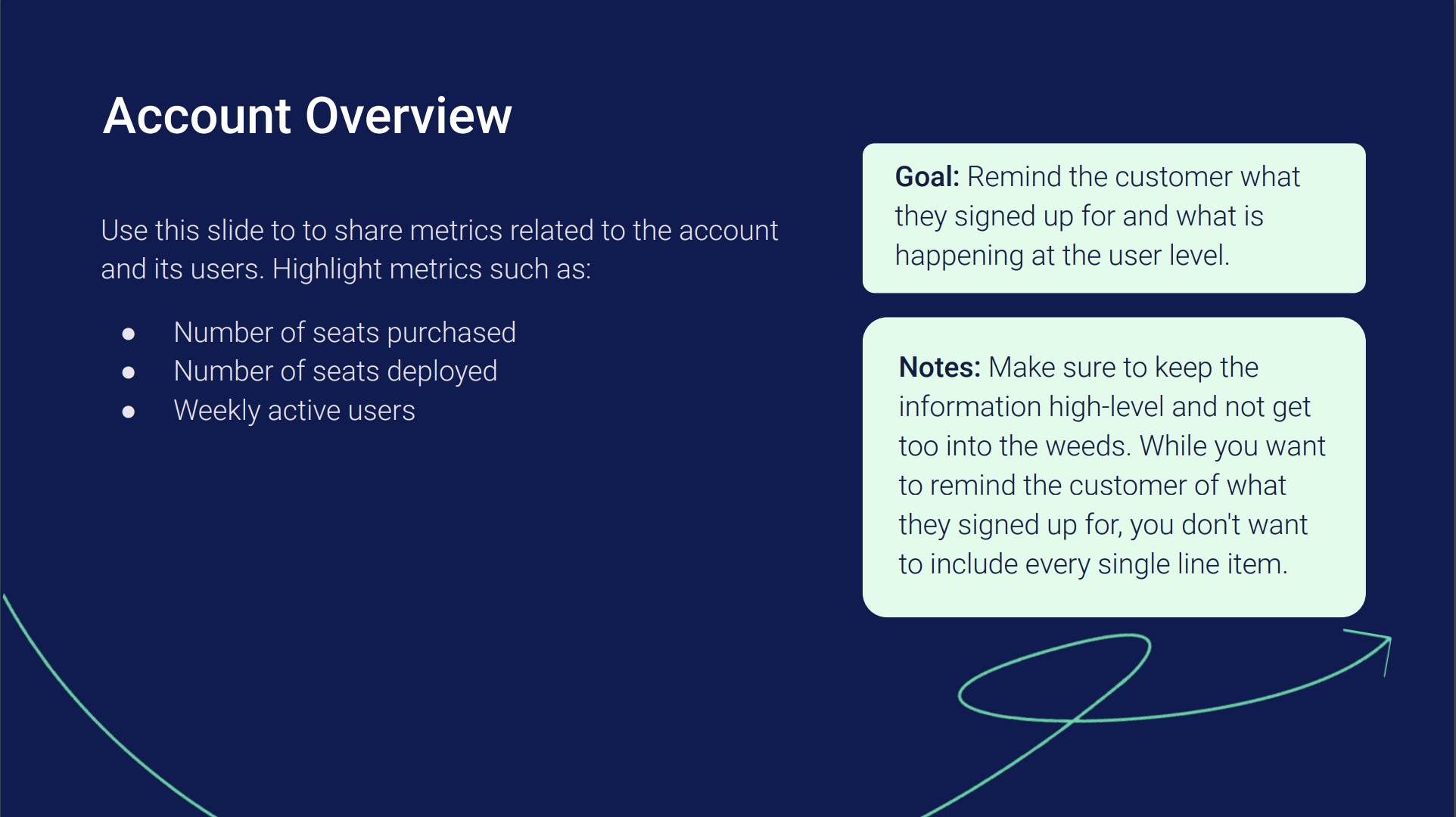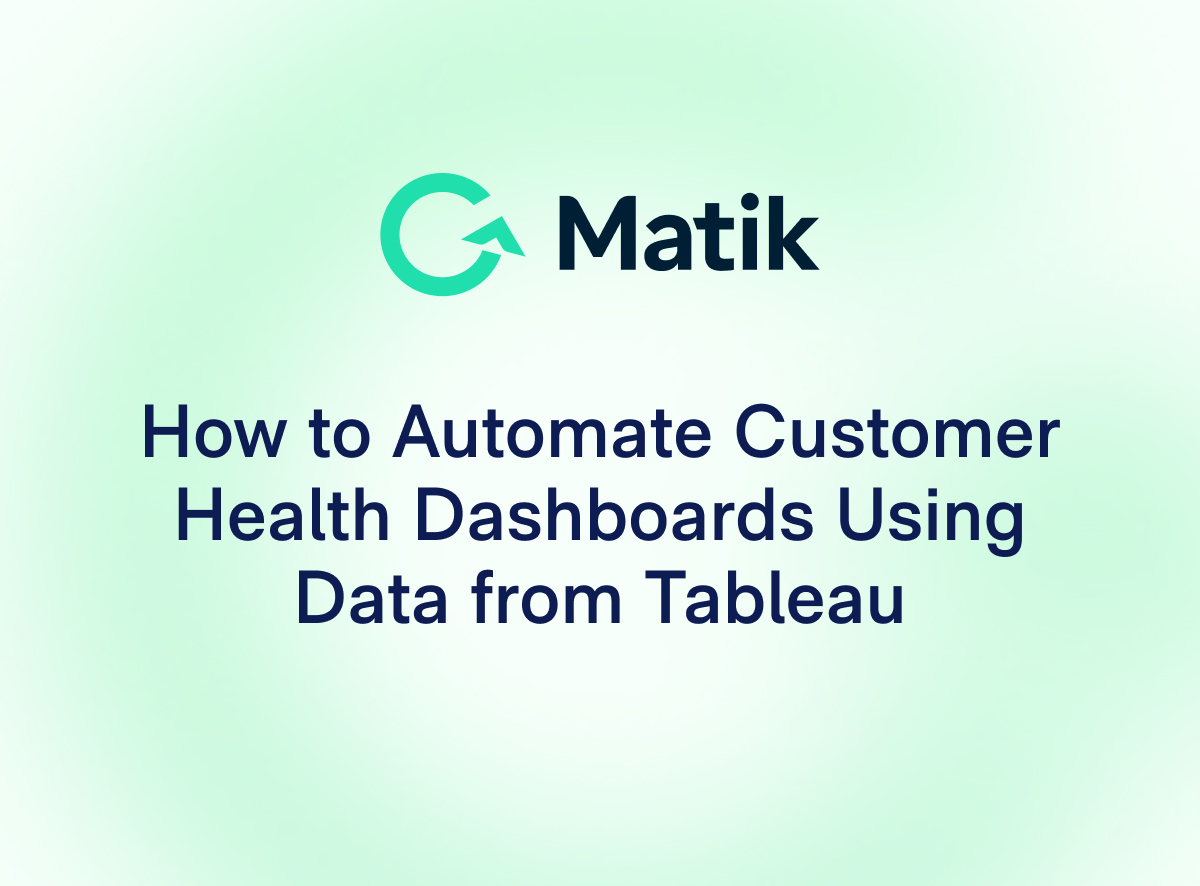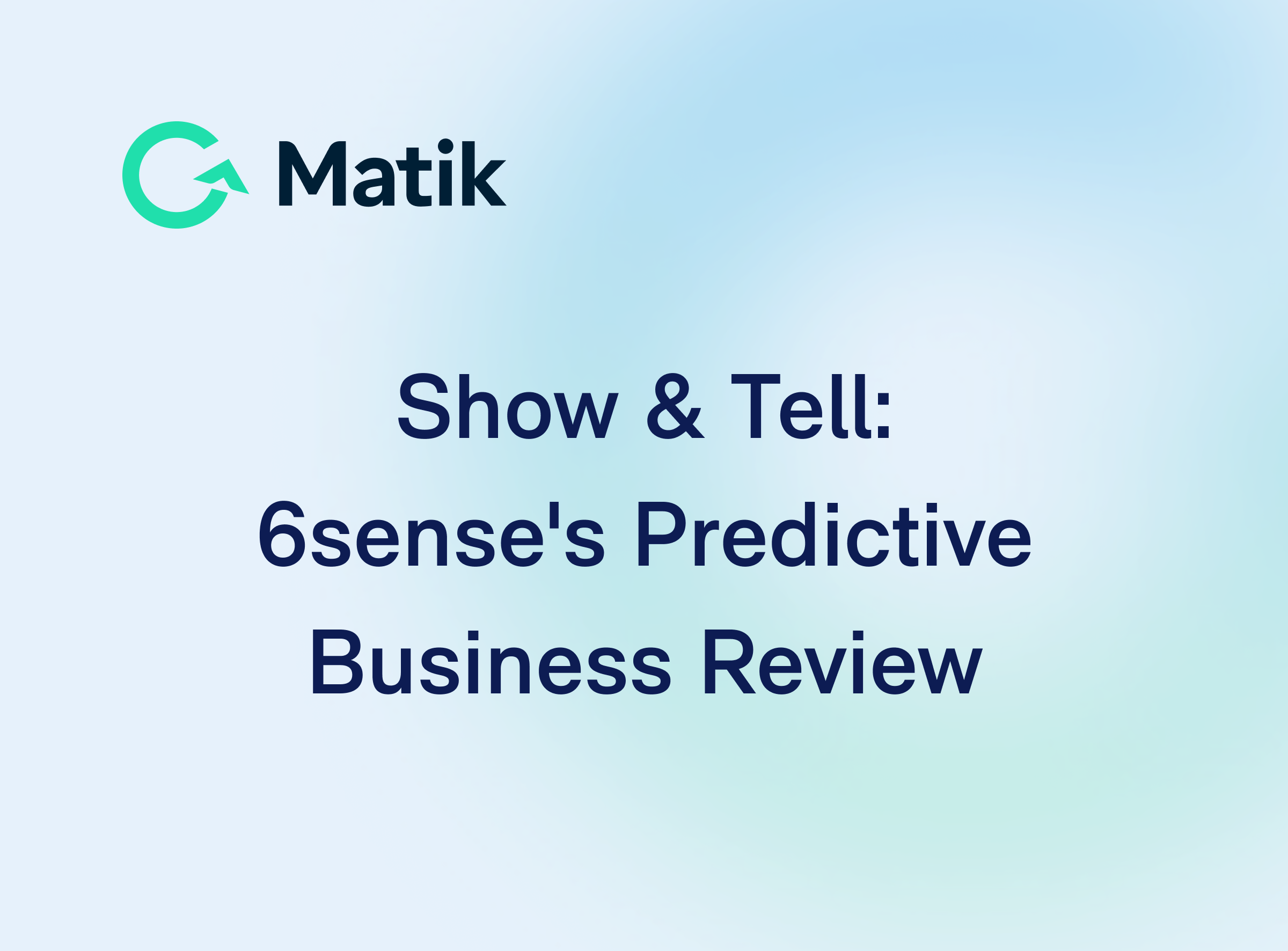Join Our Newsletter
As businesses grow and evolve, it becomes increasingly important to regularly assess performance with your customers. A good way to do this is to hold a quarterly meeting with middle management and company stakeholders. A Quarterly Business Review (QBR) is held to showcase the value of your product or service at scale, highlight successes, and offer actionable recommendations for getting more value.
QBRs tend to focus on performance metrics, such as how things are going with user adoption, feature usage, and even how they are doing compared to other similar companies. Assembling a well-rounded QBR deck is the best way to navigate your business review successfully. An executive summary, performance metrics and KPIs, and initiatives and actionable next steps are anchors for a successful QBR deck.
Executive Summary
The executive summary serves as the gateway to your QBR deck, offering a high-level overview of the impact your customer is seeing with the product. Approach this slide as though it is the only one that the decision-maker will see. You will want to highlight the things that will keep you in their tech stack. The main focus of this slide should be the ROI of your product, and how it helped move the needle for the customer and their company goals and objectives. Highlighting the most significant data points and trends will let your customer know at a high-level how successful their goals and objectives were. Be sure not to overload this slide, keeping text light and focusing on data by using visuals such as charts or graphs to illustrate these points effectively.

Performance Metrics and KPIs
Account Overview - This slide will share metrics relevant to the account and its users. This is a good way to remind customers what they signed up for and also what is happening on a user level. Keep this information high-level and don’t get lost in minor details. You want to remind customers what they signed up for, you don’t want to include every single line item.

Usage Overview - This will allow you to help your customer understand their current usage. Highlight product usage with data visualization techniques, a chart will convey a better story as opposed to just listing numbers. Clearly emphasize key insights alongside the chart. To avoid clutter, distribute the metrics across several slides instead of cramming them into one. Share details even if the numbers are not favorable, this is your chance to share how to get your customers to use the product more and work through what may be hindering them.

ROI - This is one of the most important slides in your QBR deck, showcasing the value your product has brought to your customer, and supporting it with data. Using data will allow you to quantify your product's value to the customer. Metrics to consider for this slide may include time savings, money saved, and/or revenue impact. It is not enough to say that usage is high, you will need to connect it to the objectives the customer is looking to accomplish.

Benchmark - This slide will position you as a strategic advisor, offering invaluable guidance to your customers. You might achieve this by involving a goal set with the customer or making a comparison with other similar companies (focusing on commonalities such as industry or company size). Discuss your observations with other customers and provide recommendations based on those insights.

Actionable Recommendations
Be sure that you're ending your QBR by positioning both your customer and yourself for future success. Offer suggestions on how they can boost adoption, maximize the value of your product, and achieve their business goals. Be sure to collect actionable feedback, provide enablement opportunities such as internal training, and leverage resolution analytic features.

Conclusion
Conducting a well-structured QBR deck is crucial for demonstrating the ongoing value of your product and fostering strong customer relationships. By presenting a comprehensive yet concise QBR deck that includes an executive summary, focuses on important performance metrics and KPIs, and actionable recommendations, you can effectively highlight successes and areas for improvement. A successful QBR not only reinforces your product's ROI but also positions your company as a strategic partner and advisor dedicated to helping your customers achieve their business goals.
---
Click here to download Matik's free QBR template
See Matik in action & book a demo















